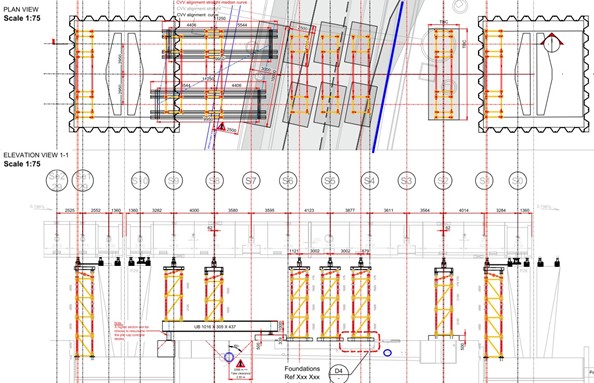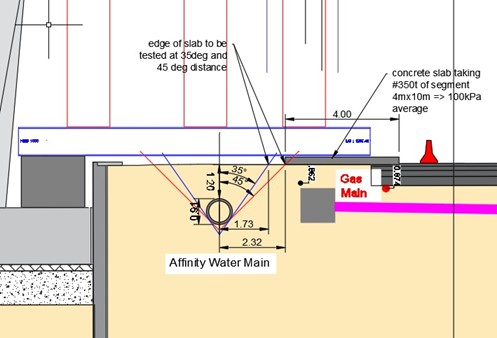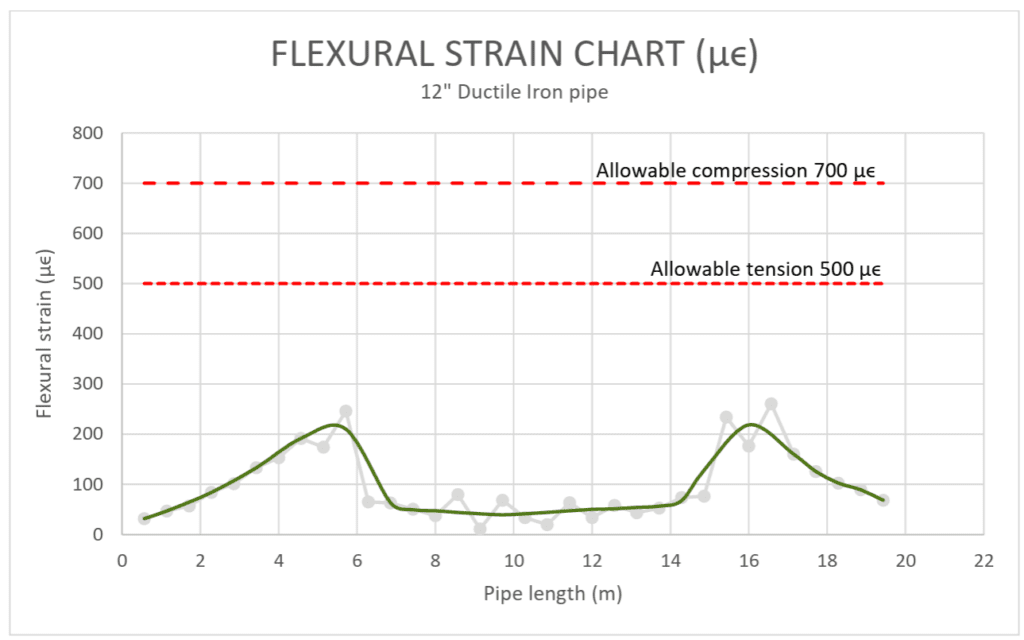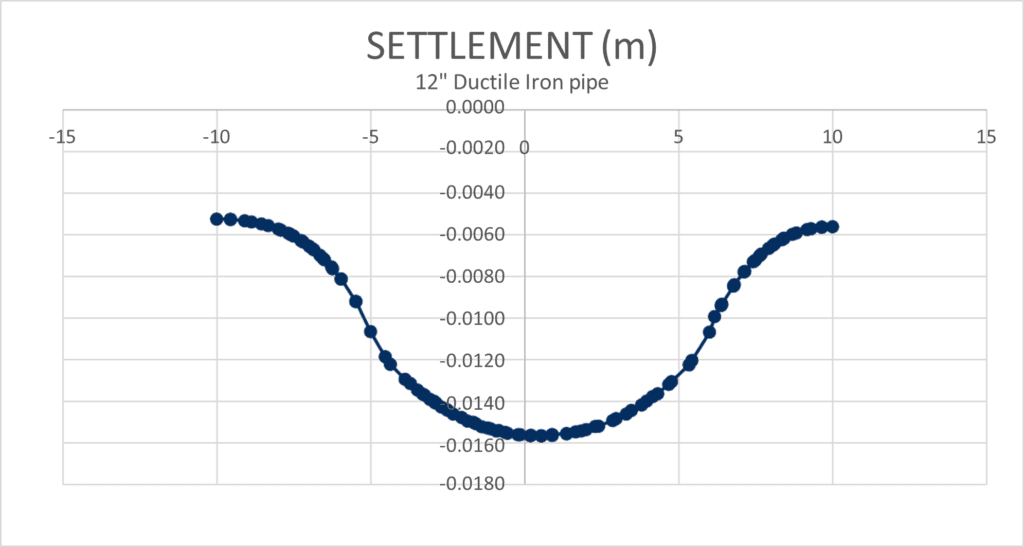Software Used on this Project
Project Overview
Our asset damage assessment software, Oasys XDisp, evaluates how several types of excavations and construction activities impact buildings, utilities, and rail infrastructure. In this use case, we’ll explore how WBD Group used XDisp to carry out asset damage assessment of the utilities located beneath the temporary works required for the construction of a new HS2 viaduct spanning above a roadway. In this case, the existing pipes beneath the temporary foundation supporting the bridge deck between the two piers needed to be inspected. The inspection was to ensure the services met the Thames Water assessment criteria for maximum strain and ground movements at their specific locations. The pipes’ maximum flexural strain (tension and compression), rotation, and diametrical distortion were checked. Two types of services were analysed: a 750 mm concrete pipe and a 12” ductile iron pipe.

How Oasys proved invaluable
The main checks carried out to ensure the stability of the utilities below ground were as follows:
- Diametric pipe distortion – calculated using the differential vertical ground displacement at the top and bottom of the pipe.
- The pipe longitudinal radius of curvature – estimated from the ground displacement curve.
- Flexural strain (compression and tension) at the pipes.
The 750mm concrete pipe has 1.20m nominal cover, is 80mm thick and is located 2m away from the edge of the foundation with 100kPa bearing pressure. The 12” ductile pipes have also a 1.20m nominal cover, are 7.5mm thick (assuming a 25% thickness loss for the analysis) and is set underneath the middle of the foundation. Both pipes were compared to the Thames Water assessment criteria.

For the assessment of the potential impact of temporary works foundations on underground utilities, first the ground soil profiles were modelled using finite element analysis (FEA) software. This model incorporated the maximum expected pressures from the temporary works foundation to simulate realistic ground behaviour.
The calculated settlements and ground pressures were then input into Oasys XDisp, where the utilities were modelled by specifying key parameters such as material type, diameter, length, among others. This allowed for a detailed analysis of the structural response of the buried services.
With XDisp, the engineers evaluated the maximum expected flexural stresses on the pipes and generated a series of critical output graphs, including settlement profiles, radius of curvature, diametrical distortion, and flexural strain. These enabled WBD to assess potential risks to the utilities and refine the design of temporary works to mitigate any adverse effects. Specifically, the analysis demonstrates the need to adjust the initial foundation scheme to bridge across the concrete pipe.
XDisp’s interoperability allows seamless integration with various data sources and software, enhancing efficiency and accuracy in damage assessment for construction projects of varying complexity.
Example of flexural strain and settlement plots generated using XDisp output data


From the assessment limit criteria, it was concluded that the unreinforced concrete pipe would be able to support a maximum strain (μϵ) in tension equal to 60 μϵ and in compression equal to 400 μϵ. Due to the uncertainty around the concrete pipe being reinforced (or not) a value of 60 μϵ was considered for the limit strain in this case.
To ensure a lower strain than 60 μϵ at the 750mm concrete pipe location, the minimum distance recommended from the centre of the pipe to the edge of the foundation is 2m.
If the values were to be compared with the assessment criteria, the maximum allowable increase in strain (μϵ) for the ductile iron pipe would be 500 μϵ in tension and 700 μϵ in compression, therefore they were considered satisfactory for the iron pipe.
Summary and learnings
This project showcases how XDisp offers engineers the flexibility and adaptability to obtain the necessary results when undertaking asset damage assessments. The engineers were able to seamlessly integrate XDisp into their existing workflows, ensuring compliance with local authority requirements. The engineers compared the outputs from XDisp against hand calculations and concluded that the software (for this project) provided less onerous figures.
We’d like to thank Senior Structural Engineer, Laura Serra and Technical Director, Mario Picone at WBD Group for sharing this work with us.
Visit the product page to learn more about our ground movement and asset damage assessment solutions.
